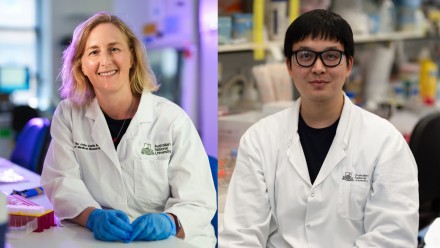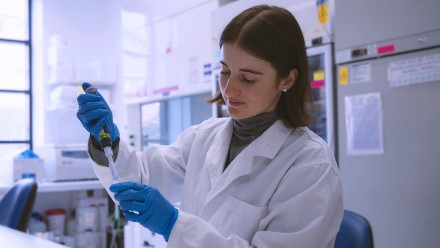Methyl-seq
How to order
At the BRF, we use NEBNext Enzymatic Methyl-seq library preparation reagents to generate sequencing libraries from 10 - 200 ng of DNA per sample. This kit produces more intact DNA than bisulfite conversion kits, allowing for libraries ranging from 370 - 520 bp with longer read lengths.
Contact the BRF at brf@anu.edu.au for a discussion about your Methyl-seq project. We will advise on sample and sequencing requirements with the associated pricing. Navigate to the "How to order" tab on the Illumina Sequencing page and download a "BRF-Made Libraries" sample submission form for the desired sequencer. Email the BRF with:
- a completed sample submission form
- a QC report for your samples from an Agilent TapeStation or Bioanalyzer, or similar
How it works
DNA methylation is an epigenetic modification involving the addition of a methyl group to cytosine, occurring predominantly at cytosine-guanine (CpG) dinucleotides. Methylation patterns play a crucial role in gene regulation and are associated with various biological processes, including development, disease, and cancer. DNA methylation patterns can be resolved through methyl-seq library preparation and sequencing.
The two most common methods of methyl-seq library preparation are sodium bisulfite conversion and enzymatic conversion. In the sodium bisulfite conversion method, DNA is treated with sodium bisulfite to deaminate cytosine into uracil, but 5-methylcytosine (5mC) and 5-hydroxymethylcytosine (5hmC) remains unaltered. The samples then undergo PCR amplification, where the amplification products will have thymine in place of uracil, and 5mC and 5hmC will be amplified as cytosine. When comparing the sequencing data to non-converted sequencing data, unmethylated cytosine will be represented as thymine, and modified cytosine will be represented as normal cytosine.
In the enzymatic method, DNA samples are treated with TET2 and an oxidation enhancer, which protects methylated cytosine from deamination. Next, APOBEC is added to the reaction to deaminate normal cytosine into uracil, but leaves methylated cytosine unconverted. The DNA is PCR amplified to generate sequencing libraries and can be analysed in the same manner as the bisulfite method.








